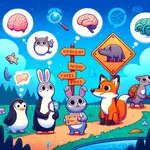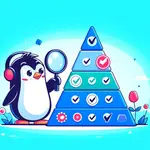Cognitive Biases
We will perceive it, when we believe it
description:Systematic errors in thinking that affect decision-making and perception by creating a subjective reality.
Dreyfus model
The steps of mastery
description:The Dreyfus model of skill acquisition outlines the progression through five stages of mastery, providing insights into how learners evolve from following strict rules to making intuitive decisions.
Shu Ha Ri
Imitation. Understanding. Emulsion.
description:a Japanese martial arts concept that outlines the progression of learning from strict adherence to innovation and ultimately, mastery.
Thinking in Systems
Understanding complexity through interconnectedness
description:Systems Thinking is an approach that emphasizes understanding situations as interconnected systems, focusing on the interactions and relationships between their fundamental components to manage complexity holistically.
description:A structured hierarchy of roles and phases in the implementation of an idea, project, or plan.
Memento Mori
Remember, you will die
description:Embrace our mortality and live a meaningful life by aligning our actions with our core values.
Return On Investment
Make it worth the effort
description:Return on Investment (ROI) is a metric used to evaluate the efficiency or profitability of an investment. It measures the amount of return on an investment relative to its cost.
description:Differentiate between the things/situations where you can have a direct impact, and those where you don't.
Heartfelt Dialogues
How emotions influence our comprehension
description:Emotional responses significantly influence the exchange of messages, often leading to misunderstandings and varied reactions based on individual emotional states.
description:Lewin's Leadership Styles model outlines three primary approaches to leadership, each impacting group behavior and productivity in distinct ways.
Styles of Support
Understanding Helping Attitudes
description:Helping Attitudes describes different roles helpers adopt to offer appropriate support, emphasizing flexibility, active listening, and the importance of shifting between roles based on the client's evolving needs.
description:Differentiate between the things/situations where you can have a direct impact, and those where you don't.
description:Code that is easy to understand, maintain, and extend. Clean code minimizes complexity and avoids unnecessary clutter.
description:Converting system characteristics into a structured solution that meets the technical and the business expectations.
description:The testing pyramid categorizes software tests ranging from isolated (fast, less realistic) to integrated (slow, more realistic).













